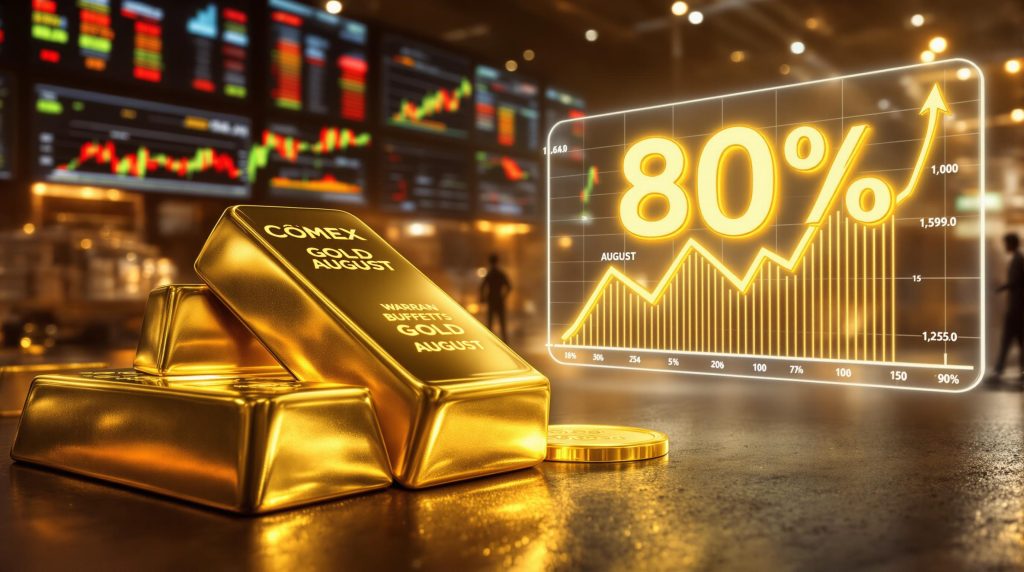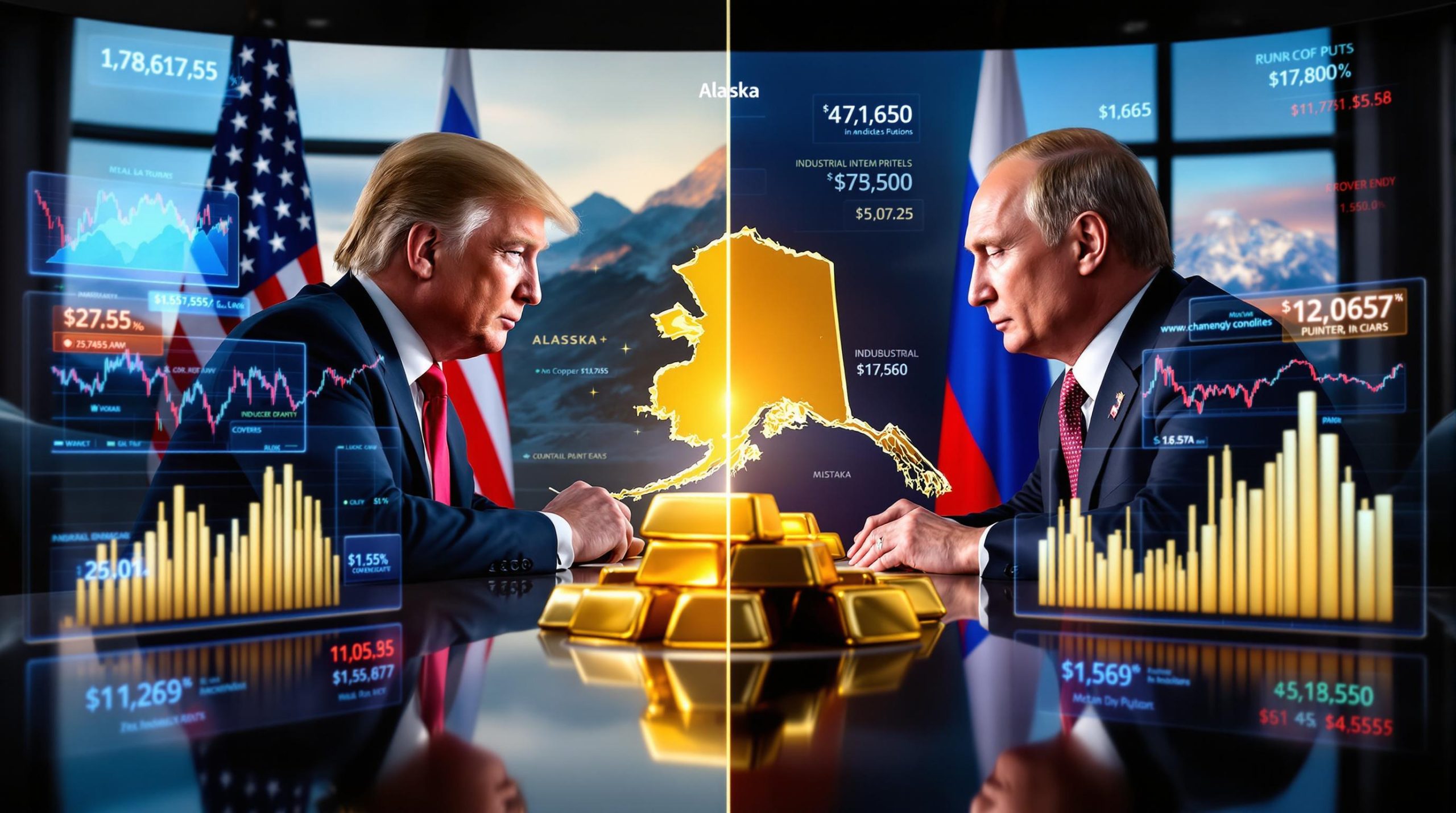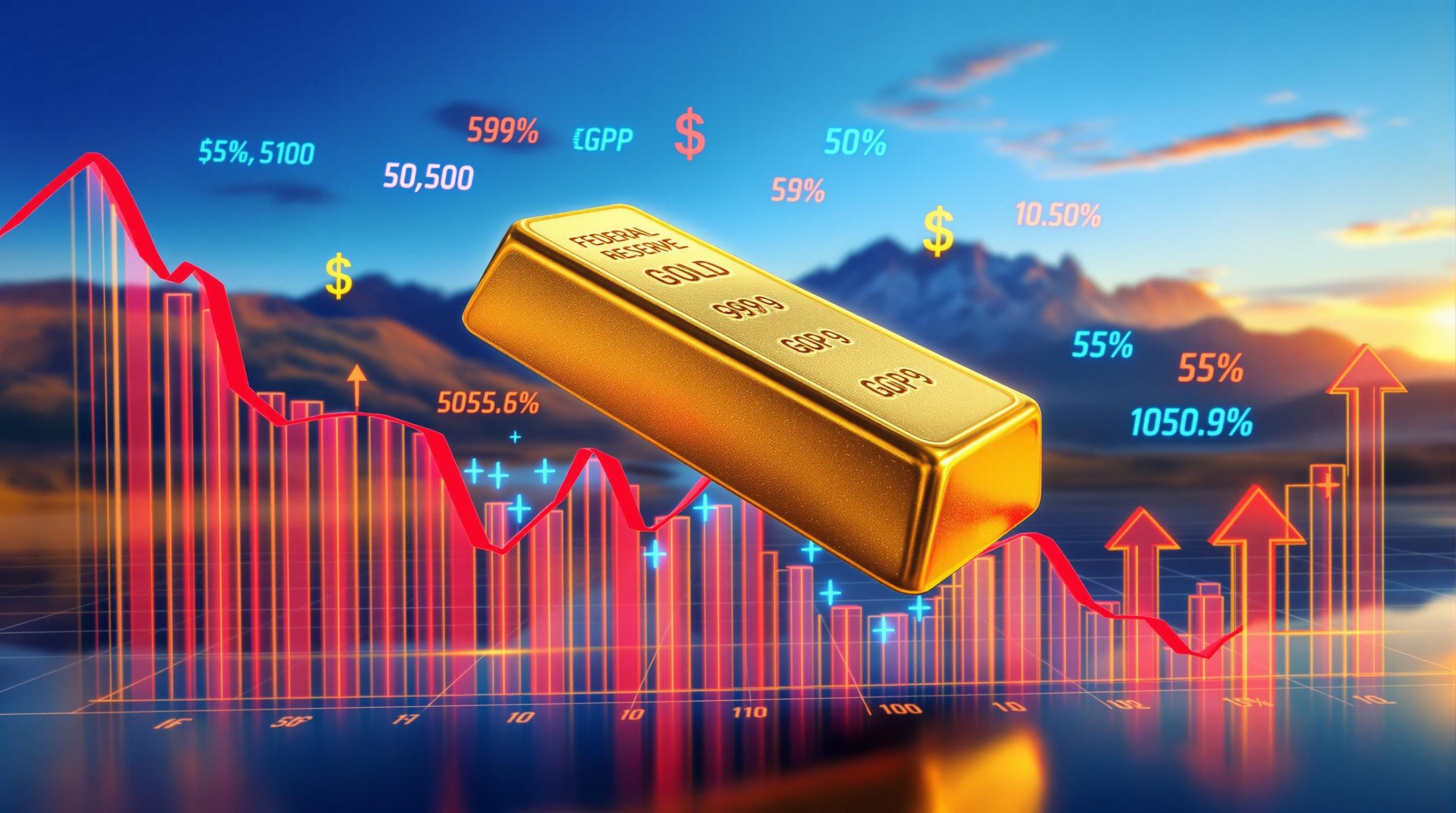The Physical Silver and Gold Market: Understanding Delivery Dynamics
In the complex world of precious metals, physical delivery represents a critical aspect that drives market dynamics, pricing, and investor sentiment. With recent developments showing unprecedented patterns in the physical movement of silver and gold, understanding these mechanisms has never been more important for investors and market participants alike.
Recent Silver and Gold Market Movements
The precious metals market has demonstrated remarkable strength recently, with silver reaching the $39 mark in recent trading sessions while gold continues its steady upward trajectory. These price movements occur within specific seasonal patterns that experienced metals investors monitor closely.
August typically represents a seasonal low point for gold prices. Historical data consistently shows that gold tends to find its bottom during this month, establishing a pattern that repeats with notable regularity. While not guaranteed, this seasonal tendency provides investors with a potential entry point for accumulating positions.
Currently, silver and gold maintain approximately an 80% correlation, meaning they generally move in tandem, though not in perfect synchronization. This correlation has historically been as high as 85%, demonstrating the close relationship between these two precious metals despite their different industrial and monetary characteristics.
Silver has established a trading range between $35-$40, with the breach of the significant $35 threshold representing an important technical development. This price action suggests potential for continued upward momentum, particularly as silver tends to demonstrate higher volatility than gold during bull markets. The latest gold highs analysis confirms this trend is likely to continue through 2025.
Understanding Market Seasonality
Precious metals markets display distinct seasonal patterns that repeat with varying degrees of consistency. August typically marks the seasonal bottom for gold prices—a pattern established through decades of market data. This seasonality provides strategic timing considerations for investors looking to optimize entry points.
The correlation between gold and silver fluctuates but generally remains strong. During periods of market stress or significant economic uncertainty, this correlation often strengthens as both metals are sought as safe-haven assets. Recent gold-silver ratio insights show how these relationships can be leveraged for investment decisions.
Trading ranges establish temporary floors and ceilings that can persist for weeks or months before breaking out. The current silver trading range between $35-$40 represents a consolidation phase following the significant breakthrough above the $30 mark earlier this year.
Physical Delivery on COMEX: An Evolving Landscape
The Commodity Exchange (COMEX) operates as the primary marketplace for precious metals futures trading in North America. Understanding its delivery system provides crucial insight into physical metal flows that impact spot prices and market sentiment.
The Traditional COMEX Delivery System
Historically, across all commodity markets—whether cotton, cocoa, soybean oil, or precious metals—only about 1% of futures contracts result in physical delivery. This low delivery rate reflects the original design of futures markets as hedging mechanisms rather than acquisition vehicles for physical commodities.
The COMEX was established primarily as a price discovery mechanism and risk management tool for producers and industrial users. However, over decades, these markets have evolved to be dominated by speculative activity rather than commercial hedging.
Algorithmic trading now accounts for the majority of market activity, with high-frequency trading strategies executing thousands of trades per second. This technological evolution has fundamentally changed market dynamics, potentially creating disconnects between paper and physical markets during periods of stress.
The technical aspects of futures contract settlement involve specific procedures for buyers standing for delivery and sellers making delivery. These processes include quality specifications, approved delivery locations, and assay requirements that ensure market integrity.
Unprecedented Physical Delivery Demands
Recent months have witnessed a remarkable shift in physical delivery patterns on the COMEX, with significantly more metal being withdrawn than historical norms would suggest. This unprecedented demand for physical delivery raises important questions about underlying market dynamics.
The unusual patterns of physical metal withdrawal lack historical precedent in terms of both volume and persistence. While occasional delivery spikes have occurred in the past, the current sustained demand pattern represents a potentially significant shift in market behavior.
Various market participants may be driving this physical silver and gold market delivery demand, including institutional investors seeking portfolio diversification, sovereign entities building strategic reserves, and industrial users securing supply chains amid geopolitical uncertainty.
These delivery demands create implications for market liquidity and pricing mechanisms. As available inventory decreases, the spread between paper and physical prices may widen, potentially leading to delivery delays or premium increases for immediate physical delivery.
Delivery constraints naturally arise when significant physical metal is removed from exchange inventories. These constraints can impact market function by limiting the ability of short sellers to make delivery, potentially forcing cash settlements or heightened borrowing costs.
Historical Delivery Events and Market Impact
Examining past instances of significant physical delivery provides valuable context for understanding potential market outcomes in the current environment.
The Warren Buffett Silver Play
In the late 1990s, Warren Buffett through Berkshire Hathaway acquired nearly 130 million ounces of silver—a massive position that represented less than 2% of Berkshire's total holdings but a significant portion of available market supply.
When Buffett stood for delivery, COMEX could only immediately deliver 90 million ounces, with the remaining 40 million ounces delivered later with significantly elevated lease rates that reached approximately 17%. This delivery constraint illustrated the physical limitations of the silver market despite its paper liquidity.
Following this event, rule changes were implemented limiting contract positions to approximately 7,500 contracts per entity, demonstrating how large delivery demands can lead to regulatory adjustments aimed at preventing market disruption.
Interestingly, a connection exists between Buffett's physical silver acquisition and the subsequent creation of silver ETFs. The initial SLV ETF started in London with approximately 130 million ounces—the same amount Buffett had acquired—suggesting a potential transformation of his holdings into a financial product. Recent developments in the silver market squeeze show similar patterns of physical demand driving market dynamics.
Market Responses to Major Delivery Events
Significant delivery demands typically trigger a series of market responses, including regulatory adjustments that limit position sizes or alter delivery requirements. These changes aim to maintain market stability while accommodating legitimate commercial hedging needs.
Price impacts during and after major physical withdrawals often include spot price premiums over futures contracts, reflecting the immediate scarcity of physical metal. These premiums can persist until supply chains adjust to the new demand environment.
Lease rates—the cost of borrowing physical metal—provide a critical indicator of physical market tightness. During Buffett's silver acquisition, these rates spiked to approximately 17%, representing an extraordinary premium for immediate physical possession.
Long-term structural market changes frequently follow major delivery events, including revised position limits, enhanced reporting requirements, and sometimes the development of new financial instruments designed to address market needs identified during the disruption.
Transparency issues in reporting large positions remain a challenge for market participants seeking to understand underlying physical demand. Despite regulatory improvements, significant market positions can still develop with limited public visibility until they impact physical delivery channels.
Current Candidates for Physical Delivery
Understanding who might be standing for delivery today provides insight into potential market developments and price trajectories.
Analysis of Potential Market Participants
Institutional investors increasingly view precious metals as portfolio diversification tools, particularly during periods of currency debasement or inflation concerns. Even small allocations from major pension funds or sovereign wealth funds could significantly impact the relatively small precious metals market.
Sovereign entities, particularly those seeking to reduce dollar dependency, have shown increasing interest in building strategic precious metals reserves. These acquisitions often occur quietly through multiple channels to minimize market impact.
Private wealth investors concerned about inflation protection have demonstrated renewed interest in physical precious metals, potentially contributing to increased delivery demands through various investment vehicles. The latest gold price forecast suggests this trend is likely to accelerate through 2025.
Mining companies occasionally adjust hedge positions by taking delivery against futures contracts, particularly when they anticipate higher prices or face production shortfalls relative to forward sales commitments.
Industrial users securing supply chains amid geopolitical uncertainty may choose to build inventory through futures delivery rather than spot market purchases, especially when physical premiums rise significantly.
Chinese Market Influence
Chinese entities have reportedly increased doré purchasing activities in South America, acquiring semi-refined precious metals directly from miners for domestic refining. This circumvents traditional market channels and reduces transparent market flows.
Domestic refining capacity expansion in China enables greater control over the precious metals supply chain, allowing for strategic acquisition without significant market visibility. This capacity development represents a long-term structural shift in global refining flows.
Strategic metal reserve building programs continue across various nations, with China reportedly among the most active. These programs typically operate with minimal disclosure, making their market impact difficult to quantify in real-time.
The Shanghai Gold Exchange operates with different delivery mechanisms than Western exchanges, with physical delivery being far more common. This creates an alternative flow of physical metal that impacts global supply distribution.
"More metal is coming off the COMEX. This is unprecedented." – David Morgan, The Morgan Report
Impact of Significant Fund Allocation on Silver Markets
The relatively small size of the silver market makes it particularly vulnerable to substantial capital inflows, creating both risks and opportunities for investors.
Institutional Investment Potential
Even modest portfolio allocations from major institutional investors could dramatically impact silver markets. If several large fund managers allocated just 2% of their assets to silver, the price impact could be extraordinary given supply constraints.
Supply limitations would quickly become apparent if multiple large investors entered simultaneously. Annual silver production, approximately 800 million ounces, would be insufficient to meet significant new institutional demand.
The silver market's relatively small size compared to institutional capital pools creates a fundamental mismatch. The entire above-ground investment-grade silver supply represents only a fraction of major institutional portfolios.
Price discovery mechanisms could face challenges under increased physical demand, potentially leading to disconnects between paper and physical prices. This divergence would likely manifest as increased premiums for physical delivery.
Delivery capacity constraints in the current system would likely emerge rapidly if institutional demand increased substantially. The existing infrastructure for refining, transportation, and secure storage of investment-grade silver has natural limitations that cannot be quickly expanded.
Supply-Demand Imbalance Scenarios
Even modest widespread retail investment could significantly impact available supply. A hypothetical scenario where 40 million people (roughly Canada's population) each purchased just 10 ounces of silver would require 400 million ounces—approximately half of annual global production.
Production capacity limitations present a significant constraint, as silver mining cannot be rapidly expanded. Approximately 75% of silver comes as a byproduct of other metal mining operations, making supply relatively inelastic to price changes.
Refining bottlenecks would likely emerge during high-demand periods, as the capacity to transform mined silver into investment-grade products represents another potential chokepoint in the supply chain.
Delivery logistics challenges would inevitably arise during market stress, including transportation security, insurance availability, and vault space limitations. These practical constraints often receive insufficient attention in market analysis.
Price discovery under physical delivery pressure typically results in spot prices trading at premiums to futures, creating potential arbitrage opportunities for those with physical delivery capabilities but widening the gap between paper and physical markets.
Market Manipulation Concerns and Regulatory Landscape
Concerns about market manipulation have persisted in precious metals markets for decades, though the technical and legal definitions of manipulation remain subjects of debate.
Regulatory and Legal Considerations
A critical distinction exists between "spoofing" (the technical term used in regulatory actions) and broader market manipulation. Spoofing involves placing and quickly canceling orders to create false impressions of market supply or demand.
Historical regulatory actions against market participants have primarily focused on spoofing rather than broader manipulation allegations. This technical focus reflects the challenges of proving manipulative intent under existing regulatory frameworks.
Stop-loss hunting through algorithmic trading represents another controversial practice, where trading programs may target likely stop-loss order clusters to trigger cascading selling or buying pressure. While potentially disruptive, such practices often fall within technical regulatory boundaries.
Settlement price influences during delivery periods receive particular regulatory scrutiny, as these prices determine contract settlement values. Unusual trading patterns during these windows often trigger enhanced surveillance.
Transparency issues in reporting requirements continue to challenge regulatory oversight, as position limits apply differently to various market participants and reporting thresholds may allow significant positions to develop without immediate visibility.
Market Structure Analysis
Leverage implications in futures markets create inherent vulnerabilities during periods of high volatility. With typical margins representing just 5-10% of contract value, relatively small price movements can force significant position adjustments.
Position limits and their effectiveness remain controversial, with commercial hedgers often exempted from restrictions that apply to speculators. This dual framework creates potential loopholes that sophisticated market participants may exploit.
Price discovery mechanisms during delivery periods face particular challenges, as physical constraints meet paper market liquidity. The resulting dynamics can lead to temporary disconnects between paper and physical prices.
Regulatory oversight limitations stem from the global nature of precious metals trading across multiple jurisdictions with varying rules and enforcement capabilities. This fragmented oversight creates potential regulatory arbitrage opportunities.
Market liquidity during stress periods often evaporates precisely when it's most needed, as participants withdraw from making markets amid uncertainty. This liquidity withdrawal can exacerbate price volatility and widen bid-ask spreads.
Strategic Positioning for Investors
Investors seeking exposure to precious metals have multiple options, each with distinct advantages and considerations that should align with individual investment objectives. Current gold market trends suggest several strategies may be particularly effective in the current environment.
Physical Ownership Considerations
Direct physical possession offers unparalleled security and elimination of counterparty risk. However, this approach requires addressing practical considerations including secure storage, insurance, and potential premium costs.
Storage and insurance considerations represent ongoing costs for physical holders. Home storage introduces security risks, while professional storage services typically charge annual fees based on metal value and provide varying levels of insurance coverage. For those requiring secure transportation of bullion, Melbourne Vault's delivery services offer specialized solutions for investors.
Premium dynamics during high-demand periods can significantly impact acquisition costs. When physical demand surges, premiums over spot prices for coins and small bars can reach 20% or more, substantially affecting investment returns.
Liquidity considerations for physical holdings deserve careful attention. While major bullion products remain highly liquid during normal market conditions, selling during market disruptions may involve accepting discounted bids or delayed settlement.
Authentication and quality assurance remain essential considerations for physical buyers. Purchasing from reputable dealers, understanding assay marks, and considering sovereign minted products can help mitigate counterfeit risks. The Perth Mint offers investors confidence through their government-backed quality assurance program.
Alternative Exposure Methods
Mining equities offer potential leverage to metal prices, typically moving with greater percentage changes than the underlying metals. However, this amplification works in both directions and introduces company-specific operational risks.
Royalty and streaming companies provide hybrid exposure between direct metal ownership and mining equities. These businesses finance mining operations in exchange for the right to purchase production at predetermined prices, offering potentially lower operational risk than miners.
ETF structures vary significantly in their physical backing policies. Investors should thoroughly understand redemption rights, storage arrangements, and whether the fund holds allocated, segregated metal or relies on pooled accounts or metal leasing programs.
Futures contracts provide sophisticated investors with leveraged exposure and precise timing control but require understanding margin requirements, rollover procedures, and potential delivery obligations or offsets.
Interest-bearing precious metals accounts offered by some institutions attempt to combine metal exposure with yield generation. However, these programs typically involve metal leasing, introducing counterparty risk that partially defeats the purpose of precious metals ownership.
Common Questions About Silver and Gold Delivery
What percentage of futures contracts typically result in physical delivery?
Historically, only about 1% of commodity futures contracts across all markets result in physical delivery. This low delivery rate reflects the primary function of futures markets as price discovery and risk management tools rather than acquisition vehicles for physical commodities.
How does physical delivery impact precious metals prices?
Significant physical delivery demands can create supply constraints in the immediate delivery market, potentially widening the spread between paper and physical prices. This divergence typically manifests as increased premiums for physical products and can lead to futures backwardation (spot prices exceeding futures prices).
What happened when Warren Buffett took delivery of silver in the 1990s?
When Buffett stood for delivery of approximately 130 million ounces of silver, the COMEX could only immediately deliver 90 million ounces, with the remaining 40 million delivered later at significantly elevated lease rates of approximately 17%. This event led to rule changes limiting position sizes to about 7,500 contracts per entity.
Are there signs of market manipulation in precious metals?
While regulatory actions have identified practices like "spoofing" in precious metals markets, the technical distinction between market manipulation and legal trading practices remains debated. Regulatory cases typically focus on specific prohibited practices rather than broader manipulation allegations.
How might institutional investment impact the silver market?
Even small allocations (1-2%) from major institutional investors could significantly impact the relatively small silver market. The entire above-ground investment-grade silver supply represents only a tiny fraction of global investment assets, creating potential for substantial price movements if institutional interest increases.
"If five of the Warren Buffets… big fund managers put 2% of their money into the silver market. Where would that take the price? It could change the whole silver industry." – David Morgan, The Morgan Report
The ongoing evolution of physical silver and gold market delivery dynamics bears watching closely. As unprecedented delivery patterns continue to emerge, understanding these mechanisms provides critical context for investors navigating the complex landscape of silver and gold markets.
Ready to Spot the Next Big Mining Discovery?
Stay ahead of the market with real-time alerts on significant ASX mineral discoveries, powered by Discovery Alert's proprietary Discovery IQ model. Visit our discoveries page to see how historic mineral discoveries have generated substantial returns for early investors and begin your 30-day free trial today.




